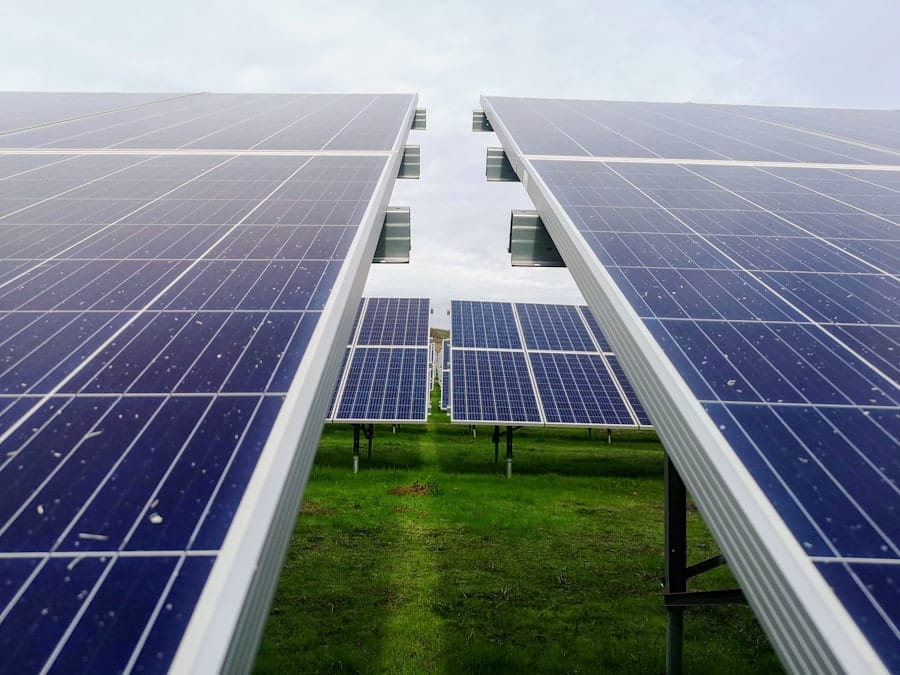When considering solar panel installation, one of the most critical factors to evaluate is shading analysis. This process involves assessing how shadows from nearby structures, trees, or other obstructions can impact the performance of solar panels. Understanding shading is essential because it directly influences the amount of sunlight that reaches the panels, which in turn affects energy production.
By conducting a thorough shading analysis, you can make informed decisions that maximize the efficiency and effectiveness of your solar energy system. Moreover, shading analysis is not just a preliminary step; it is a vital component of the entire solar installation process. It helps you identify potential issues before they arise, allowing for better planning and design.
By recognizing areas that may experience shading at different times of the day or year, you can optimize panel placement and orientation. This foresight can lead to significant long-term benefits, including increased energy output and reduced costs associated with underperforming systems.
Key Takeaways
- Shading analysis is crucial for maximizing solar panel efficiency and performance.
- Shading can significantly reduce the efficiency of solar panels, leading to decreased energy production.
- Shading analysis plays a key role in selecting the best site for solar panel installation to minimize shading impact.
- Overcoming shading challenges requires careful planning, use of technology, and potential adjustments to panel placement.
- Shading can have a long-term impact on solar panel performance, making regular analysis and maintenance essential.
How Shading Can Affect Solar Panel Efficiency
The String Effect
This phenomenon is known as the “string effect,” where the performance of one shaded cell can drag down the output of the entire string of cells. As a result, understanding how shading affects efficiency is crucial for anyone considering solar energy.
Long-term Consequences
In addition to immediate efficiency losses, shading can also lead to long-term degradation of solar panels. Prolonged exposure to shaded conditions can cause uneven heating and cooling, which may result in physical damage over time.
Early Detection and Prevention
This not only reduces the lifespan of your solar panels but also increases maintenance costs. Therefore, recognizing and addressing shading issues early on can save you from future headaches and expenses.
The Role of Shading Analysis in Site Selection for Solar Panel Installation

When selecting a site for solar panel installation, shading analysis plays a pivotal role in ensuring optimal performance. You need to evaluate the surrounding environment to identify potential sources of shade throughout the day and across different seasons. This analysis helps you determine whether a particular location is suitable for solar energy generation or if adjustments need to be made to avoid shading issues.
Additionally, effective site selection based on shading analysis can lead to better energy yield predictions. By understanding how sunlight interacts with your chosen site, you can make more accurate estimates of energy production. This information is invaluable when calculating return on investment and determining the financial viability of your solar project.
Ultimately, a well-conducted shading analysis during site selection can set the foundation for a successful solar installation.
Overcoming Shading Challenges in Solar Panel Installation
While shading presents challenges, there are several strategies you can employ to overcome these obstacles. One effective approach is to adjust the layout and orientation of your solar panels. By positioning them at different angles or elevations, you can minimize the impact of shadows cast by nearby objects.
This flexibility allows you to optimize energy capture even in less-than-ideal conditions. Another solution involves using technology such as microinverters or power optimizers. These devices help mitigate the effects of shading by allowing individual panels to operate independently.
If one panel is shaded while others receive full sunlight, microinverters ensure that the shaded panel does not drag down the performance of the entire system. By incorporating these technologies into your solar installation, you can significantly enhance overall efficiency and reduce the negative impact of shading.
The Impact of Shading on Solar Panel Performance Over Time
The effects of shading on solar panel performance are not just immediate; they can also manifest over time. As mentioned earlier, prolonged shading can lead to physical damage and reduced efficiency. However, it’s essential to recognize that even short-term shading events can accumulate over time, resulting in a noticeable decline in energy output.
Regular monitoring and maintenance are crucial to ensure that your solar panels continue to perform optimally throughout their lifespan. Furthermore, understanding how shading impacts performance over time allows you to make informed decisions about system upgrades or replacements. If you notice a consistent drop in energy production due to shading issues, it may be worth considering additional measures such as trimming trees or relocating panels.
By staying proactive about shading challenges, you can maintain high levels of performance and maximize your investment in solar energy.
Tools and Technologies for Shading Analysis in Solar Panel Installation

In today’s digital age, various tools and technologies are available to assist with shading analysis for solar panel installation. Software programs like PVsyst and Helioscope allow you to model potential shading scenarios based on geographic data and site-specific conditions. These tools provide valuable insights into how shadows will affect your system’s performance throughout the year.
Additionally, physical tools such as solar pathfinders and smartphone applications can help you assess shading on-site. These devices allow you to visualize how sunlight interacts with your environment at different times of the day and year. By leveraging these technologies, you can conduct comprehensive shading analyses that inform your installation decisions and ultimately enhance system performance.
Best Practices for Conducting Shading Analysis in Solar Panel Installation
To ensure an effective shading analysis, there are several best practices you should follow. First, conduct a thorough site survey that includes measuring distances from potential shade sources and documenting their heights. This information will help you create an accurate model of how shadows will fall on your solar panels throughout the day.
Second, consider seasonal variations when analyzing shading impacts. Trees and other vegetation may cast different shadows depending on the time of year due to changes in sun angle. By accounting for these variations, you can develop a more comprehensive understanding of how shading will affect your system over time.
Lastly, involve professionals who specialize in solar energy systems when conducting your analysis. Their expertise can provide valuable insights and ensure that all potential shading issues are identified and addressed effectively.
The Economic Impact of Shading on Solar Panel Installation
The economic implications of shading on solar panel installation cannot be overstated. When panels are shaded, their energy production decreases, which directly affects your return on investment (ROI). If your system generates less electricity than anticipated due to shading issues, it may take longer to recoup your initial investment and achieve financial savings.
Moreover, if you fail to address shading challenges during installation, you may face additional costs down the line. This could include expenses related to system upgrades or maintenance required to mitigate shading effects. By conducting a thorough shading analysis upfront, you can avoid these potential pitfalls and ensure that your solar investment remains economically viable.
Shading Analysis and its Influence on Solar Panel Maintenance
Shading analysis also plays a crucial role in ongoing maintenance for solar panel systems. Regularly assessing how shadows impact your panels allows you to identify any changes in performance over time. For instance, if new construction occurs nearby or trees grow taller, these factors could introduce new shading challenges that need to be addressed.
Additionally, understanding how shading affects your system’s performance enables you to schedule maintenance more effectively. If certain panels are consistently underperforming due to shade, you may prioritize their inspection or cleaning to ensure optimal energy production. By integrating shading analysis into your maintenance routine, you can prolong the life of your solar panels and maximize their efficiency.
The Environmental Benefits of Shading Analysis in Solar Panel Installation
Conducting a thorough shading analysis not only benefits individual installations but also contributes positively to environmental sustainability as a whole. By optimizing solar panel placement and reducing inefficiencies caused by shading, you enhance the overall effectiveness of renewable energy systems. This leads to greater energy production from clean sources and reduces reliance on fossil fuels.
Furthermore, effective shading analysis can help promote responsible land use practices. By identifying areas with minimal shading potential for solar installations, you encourage development in locations that maximize energy output while minimizing environmental impact. This holistic approach supports both individual energy goals and broader sustainability initiatives.
Future Trends in Shading Analysis for Solar Panel Installation
As technology continues to evolve, so too will the methods used for shading analysis in solar panel installation. Emerging technologies such as artificial intelligence (AI) and machine learning are expected to play significant roles in enhancing predictive modeling for shading impacts. These advancements will allow for more accurate assessments and better decision-making regarding panel placement and orientation.
Additionally, as urban environments become denser and more complex, innovative solutions will be necessary to address new shading challenges. Vertical gardens or green roofs may become more common as cities seek ways to integrate nature into urban landscapes while still maximizing solar energy potential. By staying informed about these trends and adapting your approach accordingly, you can ensure that your solar installations remain efficient and effective well into the future.
In conclusion, understanding the importance of shading analysis in solar panel installation is essential for maximizing efficiency and ensuring long-term success. By recognizing how shading affects performance, employing effective strategies to overcome challenges, and utilizing advanced tools for analysis, you position yourself for optimal energy production while contributing positively to environmental sustainability.
In a related article discussing solar energy in various applications, it highlights the use of solar-powered gadgets and devices. The article explores how solar energy can be utilized beyond just traditional solar panel installations, showcasing the versatility and potential of this renewable energy source. To learn more about the innovative ways solar energy is being integrated into everyday devices, check out this article.
FAQs
What is shading analysis in the context of solar panel installation?
Shading analysis is the process of evaluating the potential impact of shading on solar panel performance at a specific location. It involves assessing the presence of any obstructions such as trees, buildings, or other structures that could cast shadows on the solar panels.
Why is shading analysis important for solar panel installation?
Shading analysis is important because shading can significantly reduce the efficiency and output of solar panels. By conducting a shading analysis, installers can identify potential shading issues and make informed decisions about panel placement and system design to maximize energy production.
How is shading analysis conducted for solar panel installation?
Shading analysis can be conducted using various tools and techniques, including on-site surveys, 3D modeling software, and solar path diagrams. These methods help installers understand the sun’s path throughout the year and identify potential shading sources.
What are the potential impacts of shading on solar panel performance?
Shading can lead to reduced energy production, hot spots on the panels, and potential long-term damage to the panels. It can also affect the overall system performance and decrease the return on investment for the solar installation.
How can shading issues be mitigated in solar panel installation?
Shading issues can be mitigated through careful system design, including the use of microinverters or power optimizers, panel tilting, and strategic placement to minimize shading impact. Additionally, regular maintenance and tree trimming can help prevent shading issues over time.